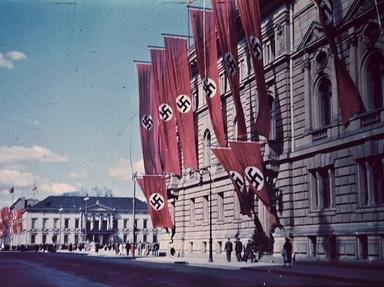Quiz Answer Key and Fun Facts
1. In 1932, Hitler was one of the candidates in the German presidential elections. He scored enough votes to run in the second round, but there he only came second. Who did he lose to?
2. Which of these laws was NOT enacted in Germany in 1933?
3. In which country did a National Socialist coup attempt fail in July 1934?
4. In January 1935, Germany regained an area that chose in a plebiscite to be reunited with it after 15 years of rule by the League of Nations. Which area do I mean?
5. In March 1935 Germany, in violation of the Treaty of Versailles, announced it already had an Air Force and was reintroducing conscription (compulsory military service). Three European nations formed the Stresa pact to contain the German aggression. Which of these countries was NOT included?
6. In March 1936, Germany broke the Treaties of Versailles and Locarno by sending troops into which area?
7. The Olympics of 1936 in Berlin were used by the Nazis as propaganda for their new order. A movie by Leni Riefenstahl about the Games became famous. What is the name of this movie?
8. In 1936, for the first time since World War I German soldiers fought in a war. Which?
9. In the much maligned Munich Agreement of September 1938, France and the United Kingdom accepted that the Sudetenland, a largely German-speaking area of Czechoslovakia bordering Germany, would be taken by Germany from Czechoslovakia. Which other two countries took advantage of the resulting weakening of Czechoslovakia to occupy part of its territory in Autumn 1938?
10. In March 1939, the rest of Czechia was occupied by Germany (to become the protectorate Bohemia and Moravia) and Slovakia became nominally independent as a German vassal state. Which other country was forced to cede territory to Germany in that month?
Source: Author
engels
This quiz was reviewed by FunTrivia editor
bloomsby before going online.
Any errors found in FunTrivia content are routinely corrected through our feedback system.
